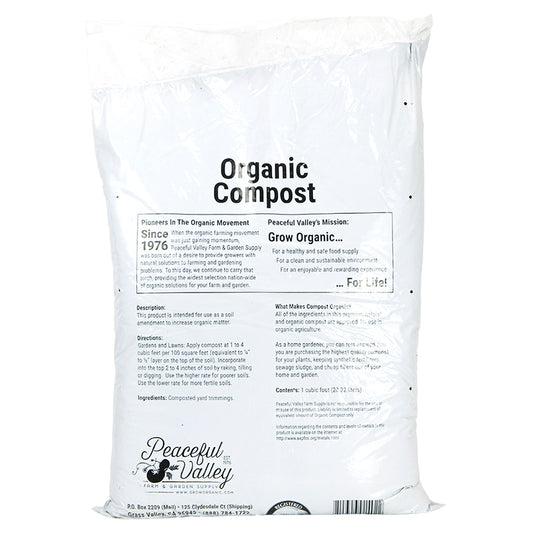Rhubarb is a cool season, perennial plant that is very winter hardy and resistant to drought. Its crop is produced from crowns consisting of fleshy rhizomes and buds.
Following a season of growth the rhubarb crown becomes dormant and temperatures below 40°F are required to stimulate bud break and subsequent growth. The first shoots to appear in the spring are edible petioles and leaves. These emerge sequentially as long as temperatures remain cool (below 90°F). As temperatures increase, top growth is suppressed, even appearing dormant in periods of extreme heat. With declining temperatures in later summer, foliage growth resumes.
Heeling In
When your bare root rhubarb crowns arrive, open the plastic bags immediately. It is best to plant right away, within a week of delivery, however if you cannot plant right away, you may “heel in” the crowns to protect them and keep them alive (but still dormant) until you are able to plant them in their permanent spot.
Outdoors: To heel in bare root crowns outside, pick a location that is shielded from wind. Dig a trench about twice as deep as the roots are long. Place in the hole roots side down. Cover the crowns with soil or sand and gently tamp down to avoid air pockets. Periodically check the crowns and keep the soil moist.
Indoors: To heel in bare root crowns indoors, whether due to snow or a frozen ground, choose a cool place like a root cellar, basement, or garage. It’s important to choose a place where the temperature stays between 38°F and 45°F. This is important so the crowns neither freeze, nor do the crowns break dormancy. Place the crowns in a container with soil or sand and be sure to keep them moist.
Climate & Growing Region

Rhubarb requires temperatures below 40°F to establish dormancy, and summer temperatures averaging less than 75°F for vigorous vegetative growth. The Northern U.S. and Canada are well suited for rhubarb production. In the United states it grows best in the northern states from Maine south to Illinois and west to Washington state.
Once planted, rhubarb remains productive for 8 to 15 years. Rhubarb can be grown in the southern regions of the United States if it is grown as an annual, however, it will wilt very quickly on hot days (over 90°F). Excessive heat may cause Rhubarb to produce only thin leaf stalks which lack color.
Soil
Rhubarb plants tolerate most soils but grows best on fertile, well-drained soils that are high in organic matter. A clean planting site is essential for the cultivation of rhubarb since no herbicides are registered for use on rhubarb.
Small areas of perennial weeds can quickly build up to serious proportions. To prevent this, all perennial weeds should be killed the year before planting. The fields should be cultivated in the spring and after cutting, and hand hoeing may also be necessary. Rhubarb is relatively free of insect and disease problems.
Fertilization
Rhubarb is rather tolerant of soil acidity but does best in slightly to moderately acid soil. The crop can tolerate soil pH as low as 5.0, however, maximum yields are attained at a pH of 6.0 to 6.8. Because rhubarb responds well to fertilizers liberal quantities are not needed. The quality of the crop harvested depends to a large extent on the care and fertilization received. Home gardeners should fertilize with a balanced fertilizer each spring.
Compost is an extremely valuable source of organic matter as it helps to conserve moisture, preserves the soil structure, and makes nutrients readily available. Apply compost in late fall or early winter, but do not cover the crowns as this may promote rotting.
Planting & Spacing
Space rhubarb roots 24–48” inches apart in rows 3–4’ apart for commercial growing. These distances can be decreased to 36” for plants in rows and rows for smaller home gardens. Much smaller than this will seriously crowd the plants and result in a diminished crop and increase the likelihood of spreading disease.
Plant the roots with the crown bud 2” (5 cm) below the surface of the soil. The hole for the crown should be dug extra large and compost should be mixed with the soil to be placed around the roots. Firm the soil around the roots but keep it loose over the buds. Water the crowns after planting. Good garden drainage is essential in growing rhubarb. For home gardeners, planting in raised beds helps ensure against rotting of the crowns.
Rhubarb responds to good care and watering. Remove the flower stalks as they are seen. During the first year of planting, the stalks should not be picked, since food from the leaves is needed to nourish the roots for the next year’s growth. One light picking may be taken during the year following planting if the plants are vigorous, and beginning the second year following planting, the entire plant may be harvested.
For the home (small) gardener, rhubarb will tolerate a fair amount of neglect and still thrive, they are very tough plants.
Harvesting
When harvesting rhubarb, the first step is to cut the stalks at the soil line or simply pull them out individually. All of the stalks of a plant may be harvested at one time, or pulled out selectively over a 4–6 week period. After the stalks are cut, the leaves may be removed.
Rhubarb pairs well with fruit. Make a Rhubarb Crisp, Strawberry Rhubarb Pie, a Rhubarb Cake, or even some Strawberry Rhubarb Jam!
Only eat the stalks! The leaves are toxic and should NOT be consumed.







